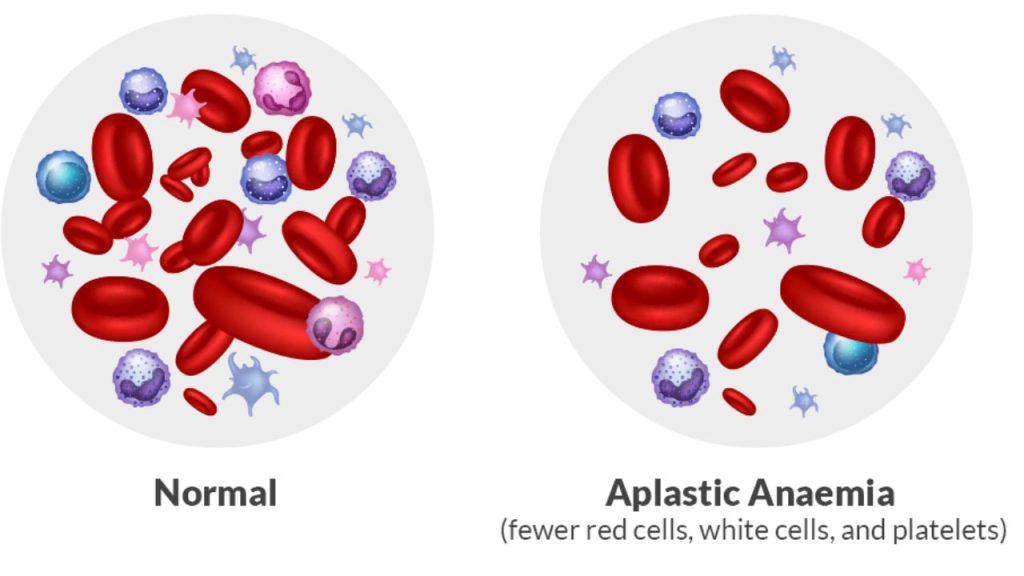
Aplastic Anemia in India
- Description of the condition and its impact on blood cell production.
- Importance of early diagnosis and treatment due to potential complications.
Causes and Risk Factors
1.Idiopathic Causes:
- Unknown reasons for many cases.
2. Acquired Factors:
- Chemical exposure (e.g., benzene).
- Radiation and certain medications.
3. Infections:
- Viral infections linked to aplastic anemia (e.g., hepatitis, EBV).
- Inherited conditions that may lead to aplastic anemia.
Symptoms
1. Common Symptoms:
- Fatigue and weakness.
- Increased susceptibility to infections.
- Easy bruising and bleeding.
- Shortness of breath.
- Pallor due to anemia.
Diagnosis
1. Physical Examination:
- Assessment of signs and symptoms.
3. Blood Tests:
- Complete blood count (CBC) findings.
2. Bone Marrow Biopsy:
- Procedure to confirm diagnosis and assess marroww function.
4. Additional Tests:
- Ruling out other conditions through blood smears and flow cytometry.
Treatment Options
1. Supportive Care:
- Blood transfusions and antibiotics.
2. Immunosuppressive Therapy:
- Medications to suppress the immune system.
3. Bone Marrow Transplant:
- Stem cell transplant as a curative option.
4. Androgens:
- Hormonal treatments to stimulate blood cell production.
Prognosis
1.Factors Influencing Prognosis :
- Age, severity, response to treatment, and complications.
2. Survival Rates :
- Variation based on treatment and individual factors.
Recent Advances in Research
1. Support Groups:
- Organizations offering emotional and practical support for patients and families.
- Advancement of immunosuppressive specialists and further developed transplantation methods.
2. Educational Materials :
- Assets to assist patients with grasping the condition and treatment choices.
Conclusion
1. Summary of Aplastic Anemia Importance:
- Emphasis on the need for early detection and intervention.
2. Encouragement for Support :
- Importance of support networks in managing the disease.








